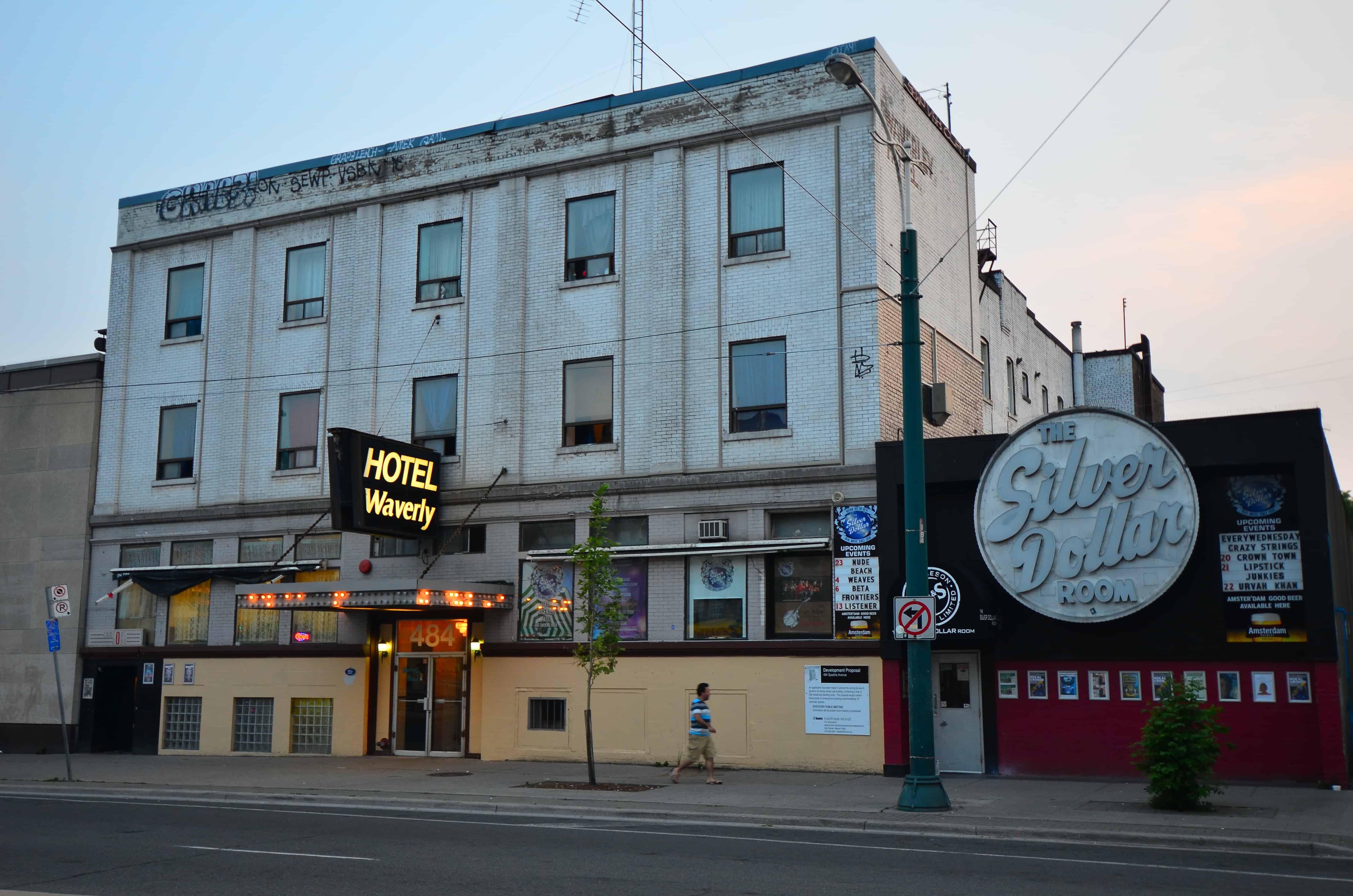Plans are underway to replace the decaying Hotel Waverly at College and Spadina with a 22-floor student residence. The proposed structure would contain apartment-style suites which would accommodate approximately 200 students. It would include amenities, such as a fitness area, as well as an expanded and refurbished Silver Dollar Room. The proposal, put forth by the Wynn Group, has been working its way through City Hall and has been flagged due to a variety of concerns. A public meeting to discuss the proposal is imminent.
Tim Grant, chair of the Harbord Village Residents’ Association, noted that while the full details of the proposal had not yet been made public (and therefore his position might be subject to change), there were still grounds for concern. He stated: “today it is clear that the building is too high for that location, and will cause significant shadowing of the [nearby] schoolyard, which is one of the few green spaces in the neighborhood.” He argues that a shorter building would be preferable for the area, suggesting: “10 to 15 storeys would be best. The current height? It’s a greed factor.”
The current owner of the Waverly, Paul Wynn, believes that opposition from local residents such as Grant, as well as, according to Wynn, Toronto Councillor Adam Vaughan, is based on incomplete information. “Our plans for the site are comprehensive and well-thought out,” Wynn argues. He contends that attempts to persuade Vaughan of the merits of this development have mostly resulted in stonewalling. He states, “I have spoken to Vaughan before [this project], but he has not replied and not replied. I want to have a meeting on site, so he can get a feel for the location and lay of the land.” Vaughn was not available for comment as of press time.
Despite concerns on the part of residents, Wynn remains confident that the proposal will be successful, noting: “We have no plans to amend the design. We have done work with consultants and spent lots of money on the proposal.” He also argues that many of the problems that led to the unpopularity of the proposed Knightstone residence are not problems for his plan. “This project is smaller, and on a larger piece of land than Knightstone, so it will be less invasive to private residences.” Wynn expects that even so, approving the project will be time-consuming, stating: “It will probably go to the Ontario Municipal Board after failing at City Hall.” The length of this process suggests that the building will not be completed for another four to five years.
While this particular project is not without its snags, there is a consensus among the various parties that more student housing is badly needed. Raven Kaur, a fourth-year U of T student who lives in the area, says that a project such as this would be, “Very useful. Affordable housing is often too far away, and sometimes students have to move back in with their parents, which is even further.” She added that if the option had been available, “I would have considered doing something like this myself.” Wynn holds a similar opinion, noting that: “Student housing is definitely required. My own daughter goes to U of T, and had a lot of trouble getting an apartment nearby.”
Grant also agrees that there is insufficient student housing, but he disagrees that a dedicated student building is the best option: “Our concern is that while the neighborhood is 20 per cent student housing, a better way to do student housing is as it already occurs: integrated. Students live side by side with other members of the community.” In particular, Grant expressed concerns about problems particular to student housing, stating: “If a student does something bad on campus, the university can kick them out, but a student cannot be kicked out by a private developer, so if there are problems of bad behavior, buildings could become real trouble spots for community and students in there.”
While admitting that his suggestion would do less to ameliorate the student housing problem, Grant contended that: “There is potential for student housing in many buildings that will be developed [in the area].” Grant also claims that a mixed-used building could, “provide more community cohesion in the building,” as everyone would be more readily encouraged to act in a neighborly fashion. “Even as a condo, like the ones further north on Spadina, it could still be full of students,” he added.
Other parties disagree with the feasibility of condominiums. Kaur points out that, “for it to really be a benefit [to students], student housing should be a bit cheaper, because not all students can just afford to rent a condo.” Wynn also disagrees with Grant’s suggestion. “If it were on College, we would do condos, but the property is next to the Scott Mission, so nobody would buy them.”
The wide variety of views, many incompatible, about how the neighborhood will develop and the implications of various projects suggest that debate will be lively and is unlikely to end soon. “Considering the issues that come up downtown, I’ve learned from precedent that it’s most important to identify potential flaws [in a proposal], and make sure that you get things right the first time. It’s very hard to go back and fix things,” said Grant.


